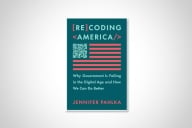You have /5 articles left.
Sign up for a free account or log in.
“Can we make it count towards a degree?”
On the non-credit side, people ask that a lot. It’s a complicated issue.
Within the academic world, we tend to think of colleges as credit-granting institutions. And that’s certainly a significant part of what we do. But particularly in the community college world, non-credit instruction is also popular and well-developed.
Non-credit courses come in several flavors. “Adult Basic Education” (often called “ABE”) covers adult literacy and numeracy courses, as well as preparation for the GED (or whatever successor a given state has chosen). “Personal Enrichment” classes are aimed at adults who just want to learn something for the sake of learning it -- retirees who take pottery classes, say. But “workforce development” is the biggest and most popular subset. Those are geared towards either getting people into the workforce, or to helping incumbent workers maintain or upgrade their skills. Examples could include training modules on popular software packages, or customer service training.
Credit-bearing courses have relatively strict rules around the amount of work, the amount of time involved, the qualifications of the instructor, and the levels of academic rigor. Non-credit courses are much more flexible, since they stand or fall on their own merits. That doesn’t necessarily mean they’re less rigorous, but it frequently means they’re less comprehensive. If you already have a degree and just need to brush up on your Excel skills, a four-week non-credit class may be just the thing; going through another entire degree program would be overkill.
From an administrative perspective, the credit vs. non-credit divide is relatively clear. But from the outside, it isn’t. And for longer-term non-credit programs, we’re seeing increasing interest in getting academic credit awarded after the fact.
The idea is to make programs “stackable.” Stackability refers to the idea that if you take enough small things in the right order, they can (and should) add up to a big thing. If you learn material in a non-credit setting, you’ve still learned it; being forced to re-learn it in a credit bearing setting for it to “count” strikes many people as arbitrary, if not self-serving.
Here’s where things get tricky. And here’s also where many of us in the community college world see real appeal in a competency-based approach to awarding credit.
The cleanest way to award credit for non-credit work is through some sort of test or portfolio. In a few fields, colleges have long used CLEP tests to award credit for material learned elsewhere. And it’s not unheard of for particular courses to have locally-developed “challenge exams” by which prospective students can show that they’ve already mastered the material covered in a particular course. The numbers of students who tend to take these things aren’t terribly high, but they help satisfy the objection from basic fairness that says that a student shouldn’t have to pay for, and sit through, a course about material she already knows. (Now that most courses have designated “learning outcomes,” there’s a clear basis for an exam.) Portfolios can work similarly, at least in principle; if a student shows through her work that she’s at the level expected of people who’ve completed a class, there’s an argument for awarding credit.
When exams or other challenge methods exist, of course, it’s possible to recast non-credit offerings as a sort of exam prep. (We’ve done that explicitly for years with the GED.) If we went to a competency-based system for awarding credit, then nearly any non-credit instruction would be stackable, as long as there was some sort of similar credit-based content.
Some people on the credit side are wary of the concept of credit for non-credit, and it’s easy to understand why. If you measure student achievements, rather than faculty credentials, then faculty credentials may be devalued. And to the extent that the credit side relies on a clear differentiation between education and training, bridging the two can lead to a certain status anxiety.
Of course, as long as financial aid is available for one and not the other, many of these concerns are mostly moot. A few people may want to prove what they know so they can get a head start on a degree; honestly, I don’t see why they shouldn’t. But until financial aid recognizes the two as connected and treats them accordingly, I suspect the threat to the credit side is more theoretical than real. Until the money moves, most of the students won’t.



